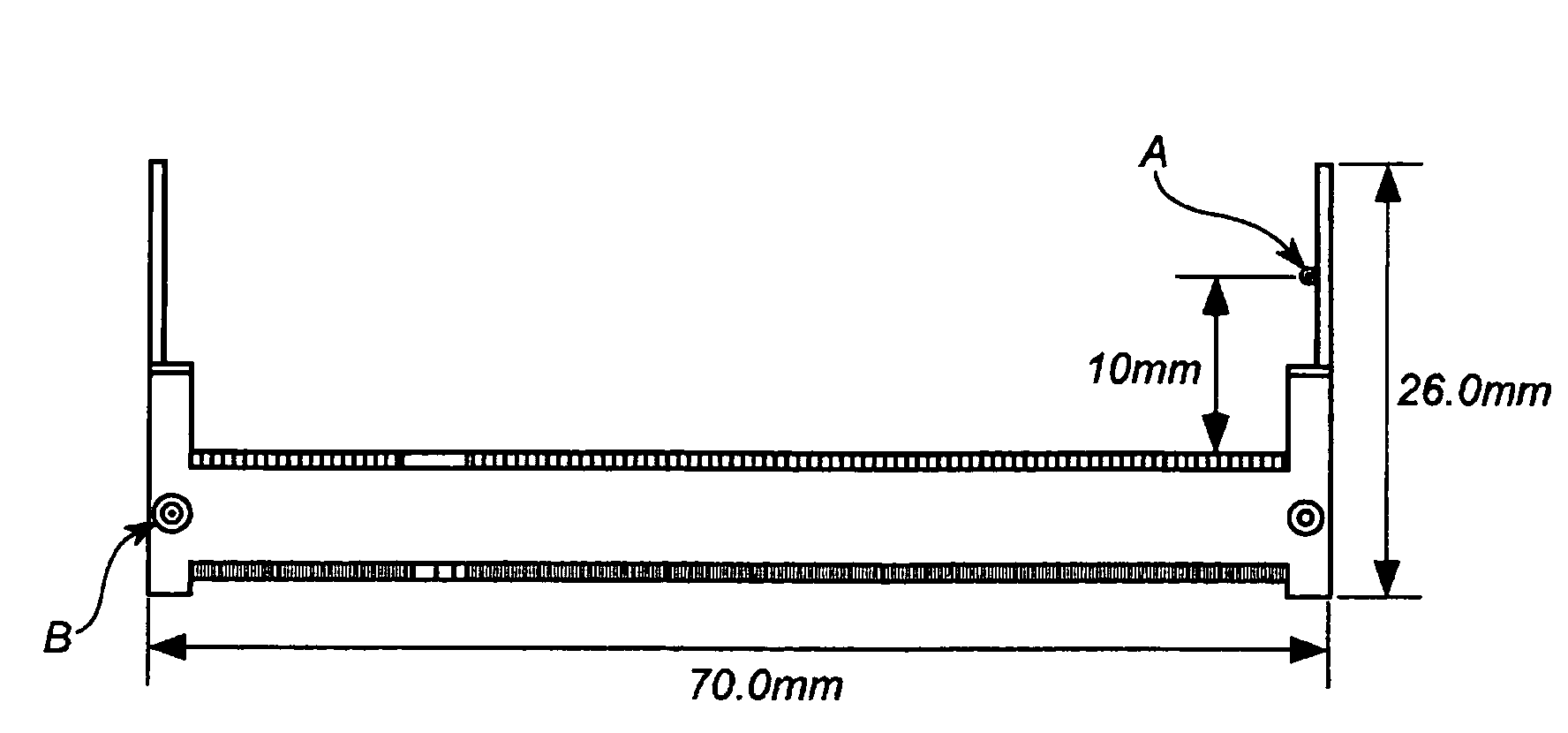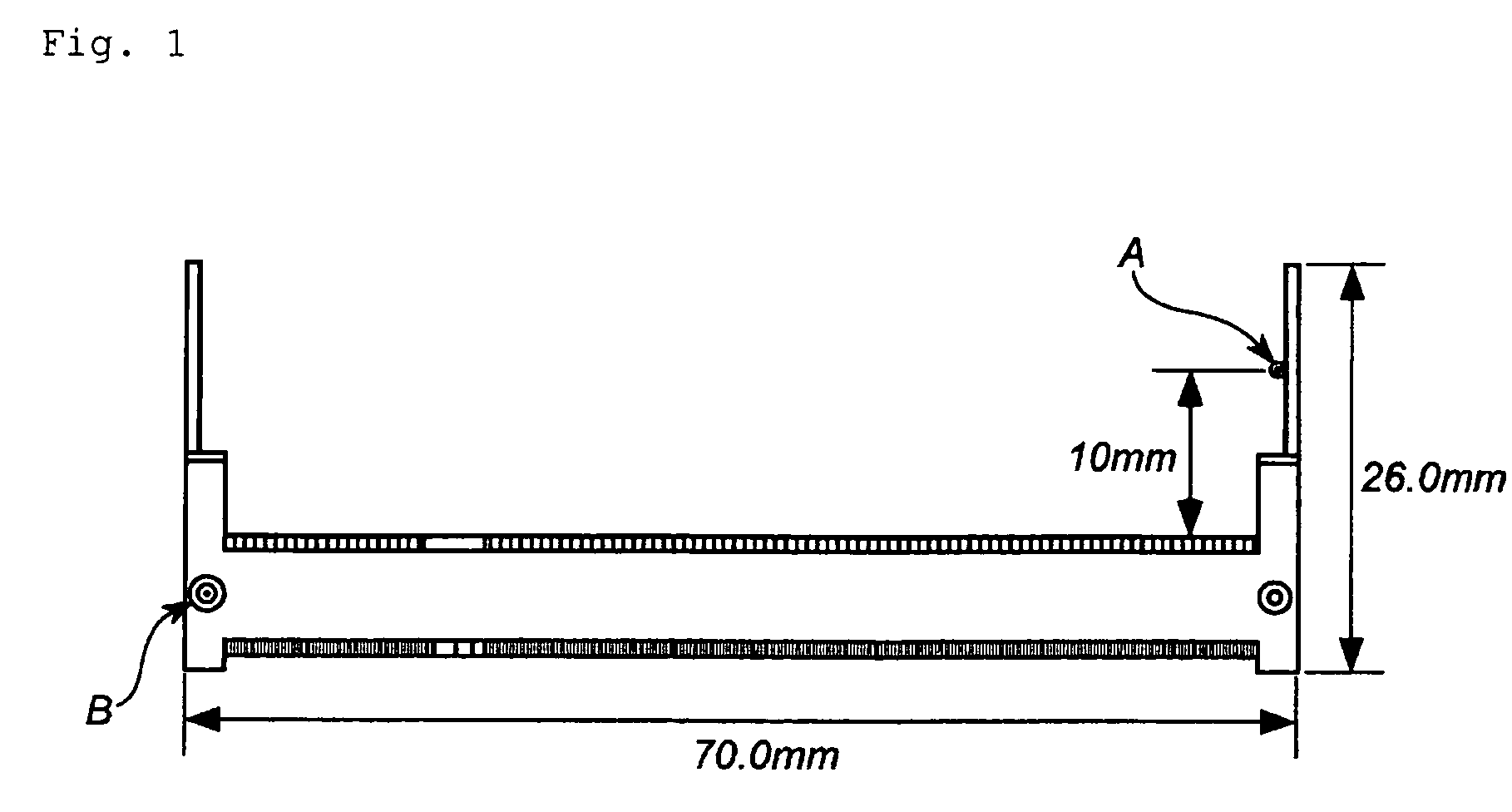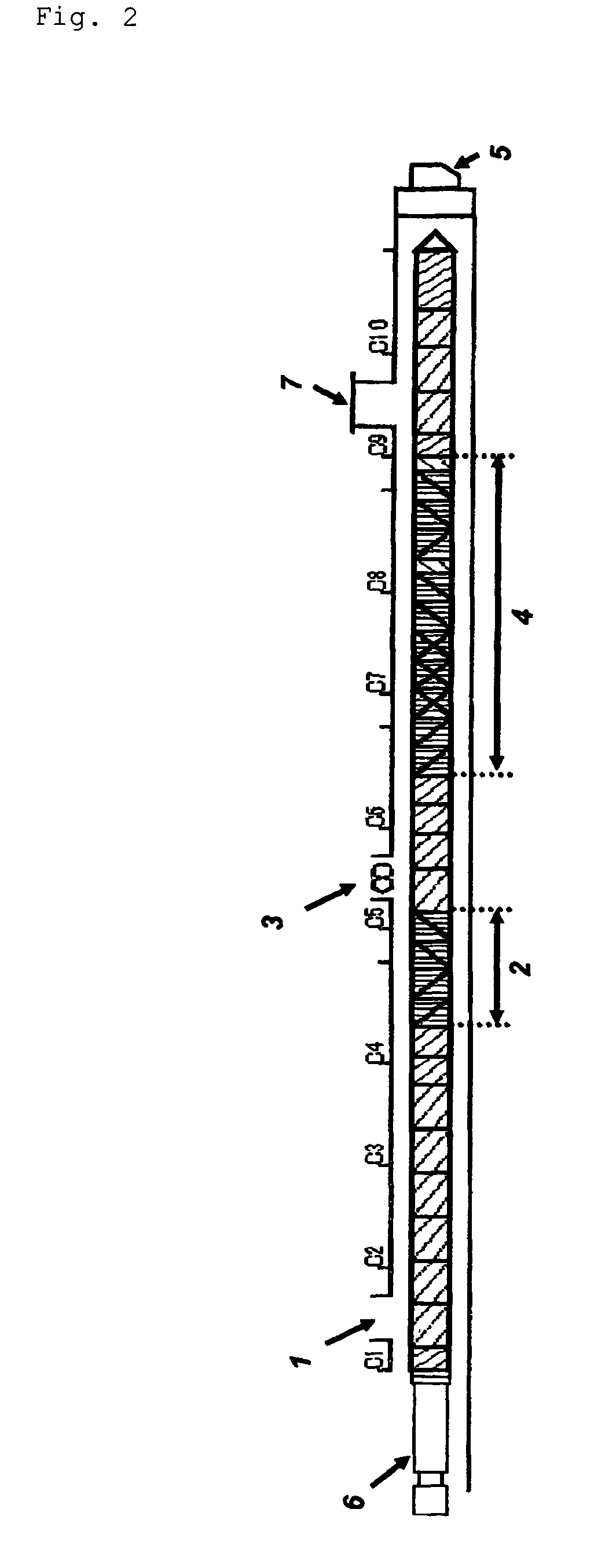Asymmetric electronic parts
a technology of electronic parts and components, applied in the direction of electrical apparatus casings/cabinets/drawers, gaseous cathodes, coupling device connections, etc., can solve the problems of deformation of insert terminals, deformation of thin wall portions, and inability to fill thin wall portions with resin, etc., to achieve good mechanical properties and less warpage
- Summary
- Abstract
- Description
- Claims
- Application Information
AI Technical Summary
Benefits of technology
Problems solved by technology
Method used
Image
Examples
examples
[0047]The present invention is described specifically in the following referring to the examples, but not limited to these examples. The determination of the physical properties and the tests in the examples were given as follows.
(1) Weight Average Fiber Length and Percentage of Fibrous Filler having 700 μm or Larger
[0048]Resin composition pellets of 5 g were heated to ash for 2 hours at 600° C. The ashing residue was fully dispersed in an aqueous solution of 5% polyethyolene glycol, which was then transferred on a petri dish using a dropper. The fibrous filler in the solution was observed by a microscope. At the same time, the weight average fiber length of the fibrous filler was measured using an image analyzer (LUZEX FS, manufactured by NIRECO Corporation). On conducting the image analysis, a subroutine was applied to separate overlapped fibers into individual ones, and thus to determine the length thereeach. The determination was given by excluding the fibrous filler having a fi...
example 6
[0095]The liquid crystalline polyester 5 was prepared under the same extrusion condition as that in Example 1 so that the liquid crystalline polyester may preliminarily contain 40% by weight of the glass fibers 3 described below. Then, pelletization was carried out similar to Example 3 except for using the liquid crystalline polyester 5 instead of the liquid crystalline polyester 3. From thus prepared pellets, the above test pieces were molded by an injection molding machine and evaluated. The result is shown in table 1.
[0096]Glass Fibers 3
[0097]ECS04T-790DE (chopped strand fibers of 6 μm of average fiber diameter and 3 mm of length), manufactured by Nippon Electric Glass Co., Ltd.
[0098]For the test pieces of Examples 1 to 3 and Example 6, the strength at the latch structural portion was measured. The result is given in Table 2.
[0099]
TABLE 1Comparative ExamplesExamples12345612Contents of Raw MaterialsUsed for ExtrusionLiquid Crystalline Polyester 1wt %27.520.032.532.550.050.0Liquid ...
PUM
| Property | Measurement | Unit |
|---|---|---|
| length | aaaaa | aaaaa |
| length | aaaaa | aaaaa |
| length | aaaaa | aaaaa |
Abstract
Description
Claims
Application Information
 Login to View More
Login to View More - R&D
- Intellectual Property
- Life Sciences
- Materials
- Tech Scout
- Unparalleled Data Quality
- Higher Quality Content
- 60% Fewer Hallucinations
Browse by: Latest US Patents, China's latest patents, Technical Efficacy Thesaurus, Application Domain, Technology Topic, Popular Technical Reports.
© 2025 PatSnap. All rights reserved.Legal|Privacy policy|Modern Slavery Act Transparency Statement|Sitemap|About US| Contact US: help@patsnap.com



